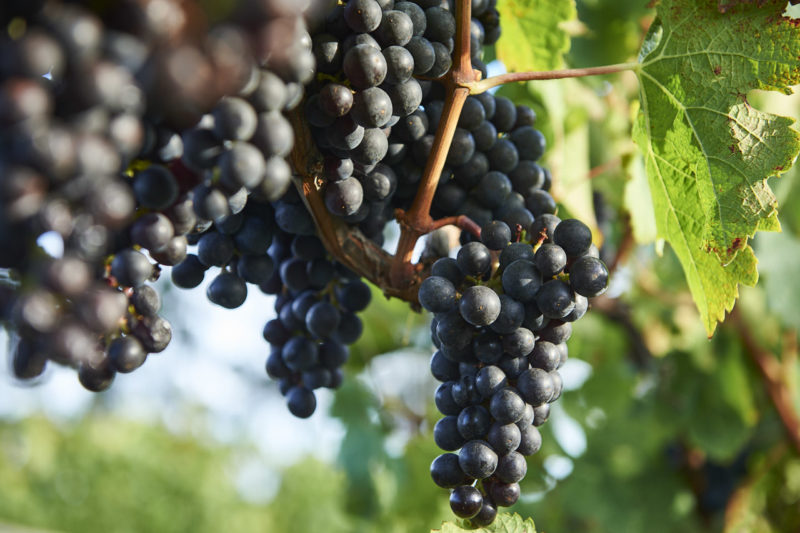Moss Wood Newsletter Late Spring News Issue # 108 November 2020
Moss Wood 2020 Semillon
Moss Wood Ribbon Vale 2018 Cabernet Sauvignon
Moss Wood Ribbon Vale 2018 Merlot
moSS WOOD 2020 SEMILLON
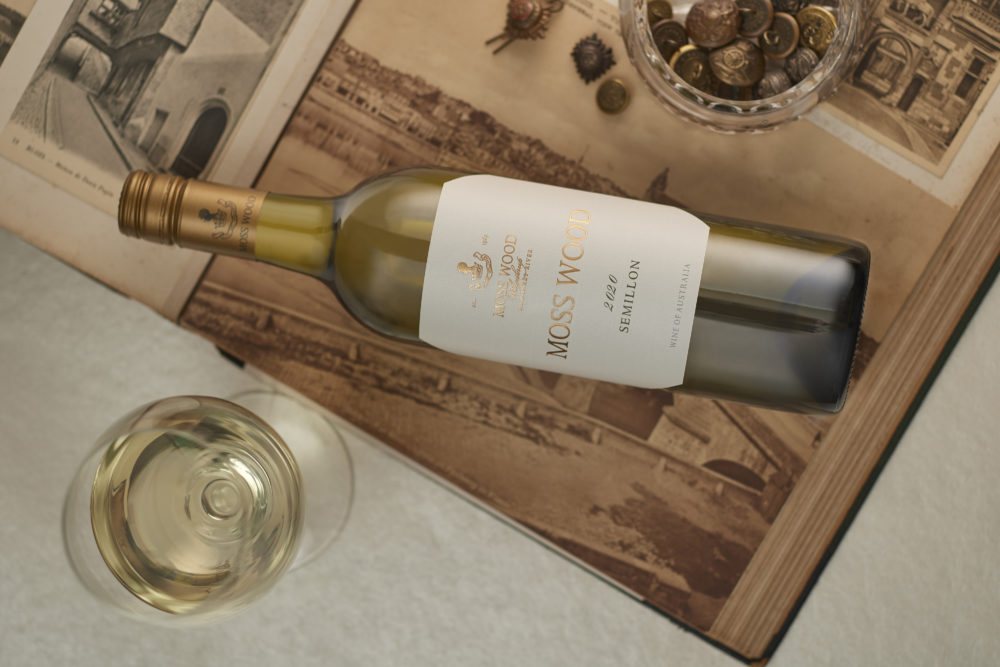
2020 Growing Season
The famous line, “We’ll all be “rooned”, said Hanrahan”, from “Said Hanrahan”, by John O’Brien, is much quoted by and about Australian farmers. Looking back on the 2020 vintage, it’s seasons like this that capture why O’Brien wrote the poem and highlight the pitfalls Mother Nature can bestow upon those of us on the land. We saw them up close and personal this year.
In southeastern Australia, the bushfires were yet another reminder we serve at Mother Nature’s pleasure. Every now and then she’ll show us that no matter how clever we think we are, she’s really in charge. The fire and smoke damage, with commensurate loss of crop and property was simply awful. In some respects, we were fortunate in Margaret River and were able to avoid fire, although that gives us no reason for complacency. In our heavily wooded region, dangerous bushfires are a genuine threat every summer. Our challenges were more traditional.
Truth be known, our growing season got off to a good start. Things had been dry, with rainfall down about 20% but by the end of October, we’d received 769mm of rain, so for viticulture at least, we were not in drought. We were proceeding quite comfortably until 12.15am on Thursday 24th October, when we received a very solid hailstorm which lasted for nearly a minute. For those who are interested in context, if hail lasts for longer than about 10 seconds, it will do significant harm to the vines. When we investigated afterwards, we found major wounds on shoots, leaves and bunches, right across both Moss Wood and Ribbon Vale.
It’s difficult to estimate exactly what was lost but the 2020 Semillon yield was down 40% at 5.87 tonnes/hectare. Once we harvested the crop, we could see the hail had impacted both the number and size of the bunches, down 6% and 34%, respectively.
To limit the damage, immediately after the event we sprayed to prevent fungal disease becoming established on all the wounds. The treatment worked and prevented things getting worse but it didn’t replace what was physically bashed and destroyed by the hail.
After this amusing interlude, things returned to normal. Semillon flowered during November, enjoying very little rain and only 4 days when the temperature dropped below 8°C. What remained of the bunches had a chance to set a reasonable crop.
We also enjoyed a warm summer, the first one since 2013. In the end, Semillon accumulated 1105 hours in the temperature range of 18-28°C, comfortably above the preferred minimum of 1000 hours. There were some nice hot days along the way and the vines accrued 65 hours above 33°C. The hottest day of the summer was 4th February, when the mercury topped out at 38°C.
Most importantly, with a small crop and such excellent ripening conditions, the remaining fruit sprinted through to full maturity. We harvested the Semillon on 20th February, 18 days earlier than average. The days elapsed from flowering to harvest were 96, some 12 days faster than usual and the sugar level reached 14.0° Baume, roughly 10% riper than average. Needless to say, the 2020 is one of the richest Semillons we’ve made.
Semillon 2020 Production Techniques
As usual, all the fruit was hand-picked and delivered to the winery where the bunches were sorted and then transferred to the presses. The pressed juice was racked to stainless steel and settled for 48 hours and then the clear juice was racked to a second stainless steel tank. It was seeded with multiple yeast cultures for primary fermentation, which was controlled to 18°C. Once completed, the finished wine was racked off gross lees and fining trials were carried out. In the end, we found the wine had excellent natural balance, so it was only fined with bentonite for protein stability. It was then sterile filtered and bottled on 13th July, 2020.
Hanrahan was wrong. We weren’t rooned, not even close. We may have made a bit less but what we did get tastes fabulous. We’d just prefer a few less challenges.
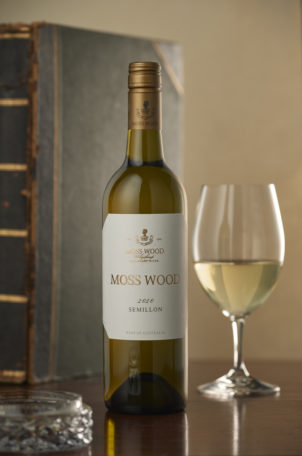
| Wine Facts | |
|---|---|
| Median Harvest Date | 20th February, 2020 |
| Mean Harvest Ripeness | 14.0° Be |
| Yield | 5.87 t/ha |
| Ripening Time from Flowering to Harvest | 96 days |
Wine Facts
-
Median Harvest Date
20th February, 2020
-
Mean Harvest Ripeness
14.0⁰ Be
-
Yield
5.87 t/ha
-
Ripening Time from Flowering to Harvest
96 days
-
Bottled
13th July, 2020
-
Released
9th November, 2020
-
Alcohol
14.5%
Tasting Notes
Colour and Condition
Medium straw hue, with green tints; bright condition.
Nose
Classic fully-ripened Semillon fruit aromas, with lots of fig, rock melon, pear and quince notes. The background is ripe Gala apple and lemon sherbet, sitting over what are the beginnings of butterscotch, lanolin and mushrooms.
Palate
Generous ripe fig and apple notes fill a round, full bodied palate, capturing the essence of the vintage. Acidity and tannins are firm but are currently sitting under rich fruit note and will only become evident as the wine ages. One of the most drinkable Semillons we’ve made.
Cellaring
Despite the obvious early-drinking appeal, this is definitely a wine for the cellar. It has the generosity of the famous Moss Wood 1980 Semillon and will certainly repay, in the same way, those who have the time and patience to cellar it. To develop some bottle bouquet, the 2020 vintage will need to be cellared for at least 10 years but will need at least a further decade after that to reach full maturity.
2018 Ribbon Vale Reds
Vintage Conditions
The tale of the 2017/18 growing season is delightfully simple. Essentially, benign conditions prevailed nearly all the way such that even Hanrahan wouldn’t have complained!
Rainfall during calendar year 2017 was above average with 1117mm, so there was plenty of moisture in the soil but with a solid 267mm falling during the growing season, the vines were never in danger of being stressed.
During the flowering period for the Cabernet varieties at Ribbon Vale, from 7th November to 12th December, there were only 3 days when the temperature dropped below 8°C, so the only interruptions were caused by rain. Hanrahan might have grumbled with his mates in the congregation when we had showers or drizzle on 14 days and received a total of 50mm of rain, which gave us lighter bunches and commensurately lower yields, the only serious disappointment of the vintage. Cabernet Sauvignon cropped at 5.06 tonnes per hectare, down 27%, while Cabernet Franc at 6.55 tonnes per hectare was down 17% and Merlot, doing its best to save the team, cropped at 7.38 tonnes per hectare, down only 5%.
At this point, however, even he would stop complaining.
Temperatures during summer and autumn were very enjoyable for those of us working in the vineyard. An absence of sustained hot weather made outdoor activities easy, although the nights were fresh and didn’t provide too many balmy evenings for holiday makers. Apart from one hot day on 14th January when the mercury topped out at 39.1°C, there were very few days when the temperature exceeded 33°C, so the vines were very comfortable indeed.
Given these mild conditions, it’s no surprise the rate of ripening was a bit leisurely. It’s almost as if the vines knew they had plenty of time to enjoy good conditions and were determined to do so. Cabernet Franc used its average 119 days to proceed from flowering to ripeness but Merlot was more casual, taking 3 more days than usual at 122. Cabernet Sauvignon, as is often the case at Ribbon Vale, was the laggard, coming in 10 days later than average with 137 days.
This last point is interesting and in all but the warmest years can certainly challenge us. As we proceed into autumn and the average temperature drops accordingly, we often find Ribbon Vale ripening noticeably slower than Moss Wood, a product of its elevated, south-facing location. It gets quite chilly out there, especially overnight, and the vines take longer to warm up and get moving in the morning. We have to be patient and keep an eye on the weather and are happy to leave the fruit out as long as we can, but we always get a bit touchy if rain is looming. We need to be ready to jump in at late notice and this is how it was in 2018. The last pick was on 9th April and over the next 2 weeks, 50mm of rain fell. We couldn’t have left things any longer but the quality was worth the wait.
We were successful in deterring the birds and our fungicide program ensured we had no disease, so each variety produced grapes in excellent condition and which also means the pressure goes on in the winery because we don’t want to spoil all that good work.
The fruit was hand-picked and delivered to the winery where it was sorted and destemmed.
Production
Cabernet Sauvignon and Cabernet Franc were both placed into small, open fermenters, seeded with multiple yeast strains for primary fermentation and hand plunged, 3 times per day for colour and tannin extraction. Both varieties remained on skins for 12 days and were then pressed to stainless steel and underwent malolactic fermentation. The time in the fermenter was one or two days less than we normally expect and is an indication of how well balanced the tannins are in the 2018 wines.
Merlot was placed in small, closed tanks for primary fermentation because we apply a slightly different technique. Initially, we chill the juice down to around 10°C and allow some extraction of colour without the presence of alcohol. It’s a technique we use on Pinot Noir but in open tanks. After 48 hours, we seed for primary fermentation with multiple yeast strains and pump the tanks over 3 times per day for extraction. We choose this over hand plunging in open tanks because, for reasons that are not entirely clear, we get better colour, in particular. After 16 days on skins each batch was pressed to stainless steel tank for malolactic fermentation.
For each variety the steps post-MLF were the same – adjusted and racked to 228 litre French oak barrels.
In December 2019, the final blends were assembled after tasting trials. The Cabernet Sauvignon was at its best with 96% of that variety, combined with 2% each of Merlot and Cabernet Franc and contained 16% new oak. The Merlot needed just a tiny lift with 5% Cabernet Franc. It had 15% new barrels.
The blended wines were returned to barrel until August 2020 when they were racked to stainless steel and fining trials were carried out. We mentioned above the excellent tannin balance in the 2018 vintage and so, as expected, no finings were necessary. Both wines were then sterile filtered and bottled on 10th and 11th August.
Moss Wood Ribbon Vale 2018 Cabernet Sauvignon
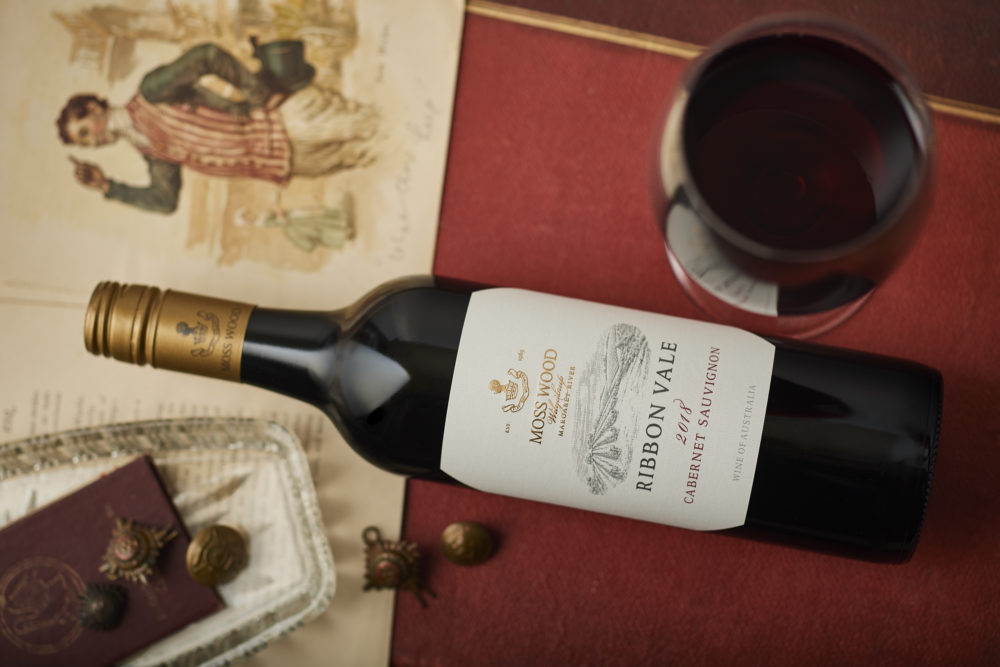
Tasting Notes
Colour and condition
Deep brick red hue; bright condition.
Nose
Cabernet Sauvignon has a range of fruit aromas that very few varieties can match. It dominates this wine, with red currant, leather and tar but unusually for Ribbon Vale, there is a suggestion of floral aroma, in particular, violets. The small percentage of Cabernet Franc has bolstered the black fruit note by introducing cherries and similarly for Merlot, which adds in blackberry.
Palate
The high-quality theme for the 2018 vintage continues on the palate, with full body and a concentrated tannin structure playing a co-starring role behind generous and supple blackberry, blueberry and fruit cake flavours, complemented by some tarry, smoky and toasty oak notes on the finish. Very smooth indeed and probably the best Ribbon Vale Cabernet Sauvignon we have made.
Cellaring
In some respects, we are beginning to feel our cellaring recommendations are becoming a bit academic. By this we mean after 20 years we are now very confident the wines from the Ribbon Vale vineyard will age just as well as their Moss Wood siblings. The Cabernet Sauvignon will cellar for decades but for those who seek some complexity from cellaring but don’t wish to wait say 25 years for full maturity, we recommend at least 10 years cellaring. Of course, as with the 2018 Ribbon Vale Merlot, this wine shares the sheer generosity of the vintage and will be hard to resist for long.
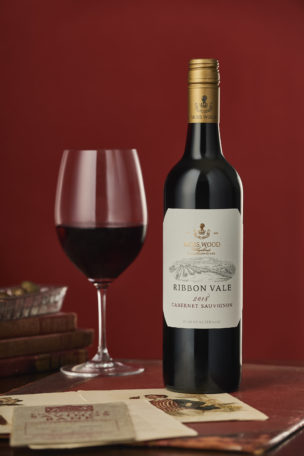
| Wine Facts | |
|---|---|
| Median Harvest Date | 2018 Ribbon Vale Cabernet Sauvignon – 8th April, 2018 2018 Ribbon Vale Cabernet Franc – 16th March, 2018 2018 Ribbon Vale Merlot – 18th March, 2018 |
| Mean Harvest Ripeness | 2018 Ribbon Vale Cabernet Sauvignon – 14.0⁰ Be 2018 Ribbon Vale Cabernet Franc – 13.1⁰ Be 2018 Ribbon Vale Merlot – 13.3⁰ Be |
| Yield | 2018 Ribbon Vale Cabernet Sauvignon – 5.06 t/ha 2018 Ribbon Vale Cabernet Franc – 6.55 t/ha 2018 Ribbon Vale Merlot – 7.38 t/ha |
| Ripening Time from Flowering to Harvest | 2018 Ribbon Vale Cabernet Sauvignon – 137 days 2018 Ribbon Vale Cabernet Franc – 119 days 2018 Ribbon Vale Merlot – 122 days |
Wine Facts
-
Median Harvest Date
2018 Ribbon Vale Cabernet Sauvignon – 8th April, 2018
2018 Ribbon Vale Cabernet Franc – 16th March, 2018
2018 Ribbon Vale Merlot – 18th March, 2018 -
Mean Harvest Ripeness
2018 Ribbon Vale Cabernet Sauvignon – 14.0⁰ Be
2018 Ribbon Vale Cabernet Franc – 13.1⁰ Be
2018 Ribbon Vale Merlot – 13.3⁰ Be -
Yield
2018 Ribbon Vale Cabernet Sauvignon – 5.06 t/ha
2018 Ribbon Vale Cabernet Franc – 6.55 t/ha
2018 Ribbon Vale Merlot – 7.38 t/ha -
Ripening Time from Flowering to Harvest
2018 Ribbon Vale Cabernet Sauvignon – 137 days
2018 Ribbon Vale Cabernet Franc – 119 days
2018 Ribbon Vale Merlot – 122 days -
Bottled
10th & 11th August, 2020
-
Released
9th November, 2020
-
Alcohol
14.5%
Moss Wood Ribbon Vale 2018 Merlot
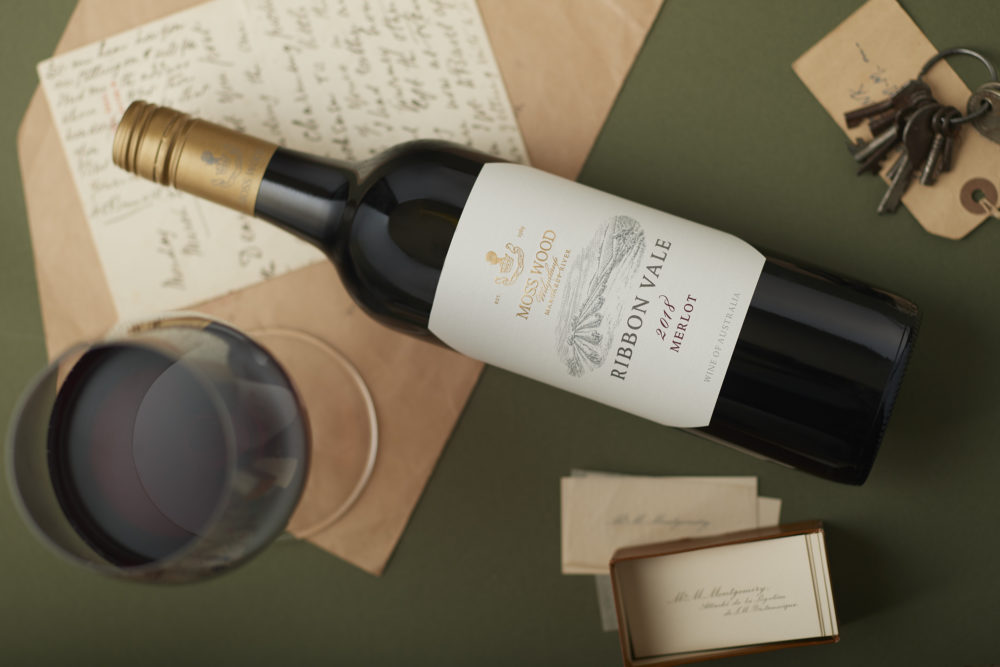
Tasting Notes
Colour and condition
Medium to deep brick red; bright condition.
Nose
Distinctly aromatic, with the full range of Merlot’s red and black fruits. Lots of blackberry, blueberry, plum and cherry, brightened by musk stick confectionery fragrance. Underneath lie earthy complexity of tarry notes, plus toasty oak and leather.
Palate
The theme of generous dark fruit follows through on the palate, where the front and middle are immediately filled with blackcurrant, mulberry and licorice. This sits over a full body and typically firm Merlot tannin structure but the combination is supple and well balanced, something we don’t often see in the young Ribbon Vale Merlots. The finish shows some tarriness and there is also some toasty oak evident.
Cellaring
There is no doubt the fruit concentration and complexity of the 2018 Merlot will see it cellar for several decades, enhancing the wine with tar and leather complexities. It will need at least a decade to show the first signs of this and will become more complete with each year that passes after that. We suspect the challenge for many will be to resist its delicious early appeal but that’s OK, we’re happy for our wines to be enjoyed at any age.
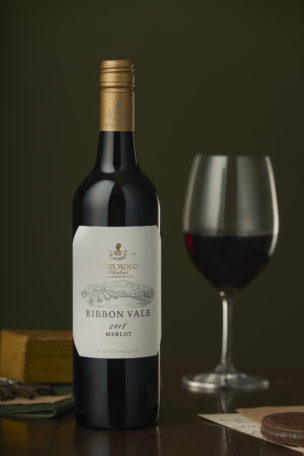
| Wine Facts | |
|---|---|
| Median Harvest Date | 2018 Ribbon Vale Merlot – 18th March, 2018 2018 Ribbon Vale Cabernet Franc – 16th March, 2018 |
| Mean Harvest Ripeness | 2018 Ribbon Vale Merlot – 13.3⁰ Be 2018 Ribbon Vale Cabernet Franc – 13.1⁰ Be |
| Yield | 2018 Ribbon Vale Merlot – 7.38 t/ha 2018 Ribbon Vale Cabernet Franc – 6.55 t/ha |
| Ripening Time from Flowering to Harvest | 2018 Ribbon Vale Merlot – 122 days 2018 Ribbon Vale Cabernet Franc – 119 days |
Wine Facts
-
Median Harvest Date
2018 Ribbon Vale Merlot – 18th March, 2018
2018 Ribbon Vale Cabernet Franc – 16th March, 2018 -
Mean Harvest Ripeness
2018 Ribbon Vale Merlot – 13.3⁰ Be
2018 Ribbon Vale Cabernet Franc – 13.1⁰ Be -
Yield
2018 Ribbon Vale Merlot – 7.38 t/ha
2018 Ribbon Vale Cabernet Franc – 6.55 t/ha -
Ripening Time from Flowering to Harvest
2018 Ribbon Vale Merlot – 122 days
2018 Ribbon Vale Cabernet Franc – 119 days -
Bottled
10th & 11th August, 2020
-
Released
9th November, 2020
-
Alcohol
14%
Order
OUR WINES:
Contact
MOSS WOOD:
Location: 926 Metricup Road, Wilyabrup WA
Postal: PO Box 225, Cowaramup WA 6284
Phone: +61 8 9755 6266
Fax: +61 8 9755 6303
Follow us on
SOCIAL MEDIA:

